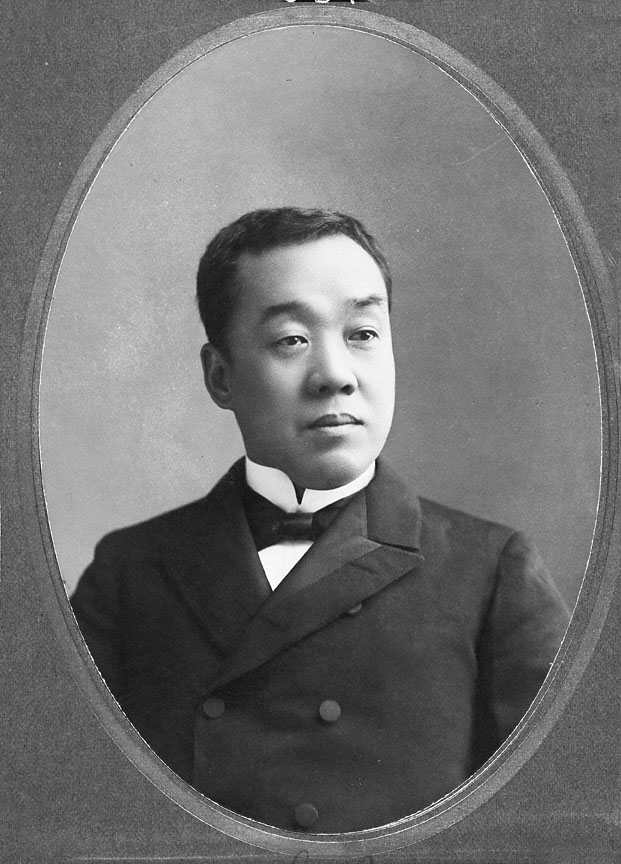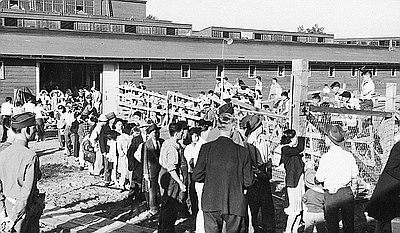- Catalog No. —
- CN 010315
- Date —
- 1900s
- Era —
- 1881-1920 (Industrialization and Progressive Reform), 1921-1949 (Great Depression and World War II)
- Themes —
- Government, Law, and Politics, Labor, Race, Ethnicity, and Nationality, Trade, Business, Industry, and the Economy, Transportation and Communication
- Credits —
- Oregon Historical Society
- Regions —
- Portland Metropolitan
- Author —
- Unknown
Shinzaburo Ban
This undated photograph, probably taken in the 1900s, is a portrait of Shinzaburo Ban, a prominent Japanese businessman who lived in Portland from the 1890s through the 1920s.
Shinzaburo Ban was born in Tokyo to a prestigious samurai family on March 4, 1854. After graduating from college, he served in the Japanese consulate in Shanghai and Honolulu. While in Hawai’i, Ban became intrigued with the growing commercial relationship between Japan and the United States. He resigned from the consulate and set up an emigration company in Kobe, Japan.
In 1891, he and his wife Kiyo moved to Portland. Two years later, Ban established his own labor contracting company, S. Ban & Company, which quickly proved to be a profitable enterprise. There was an influx of Japanese workers into the United States during the 1890s and 1900s, partly due to the exclusion of Chinese workers, who were prohibited from immigrating into the U.S. by the 1882 Exclusion Act. By 1900, there were more than 2,500 Japanese in Oregon, more than half of them in the Portland area.
S. Ban & Company supplied thousands of workers to railroads, farms, mills, and canneries throughout the American West. Ban’s company soon became the largest Japanese labor contractor in Oregon, taking in $5 million a year at its peak. Education specialist Barbara Yasui notes that “mainly because of Ban’s dealings with the railroads and its steamship connections to Japan, Portland became the major center for distribution of Japanese railroad laborers in the Pacific Northwest.”
In addition to his labor contracting business, Ban also owned a shingle company, a lumber mill, a cattle ranch, a sugarbeet farm, and a general store in Portland. He also had branch offices in Colorado, Wyoming, and Japan. S. Ban & Company remained the largest Japanese business in Oregon until its bankruptcy in 1924. By this time, Japanese immigration had been effectively eliminated by federal legislation. Moreover, Oregon’s 1923 Alien Land Law prohibited non-citizens from owning or leasing land, ruining several of Ban’s businesses. The bankrupt Ban returned to Japan in 1926, where he remained until his death.
Further Reading:
Gaston, Joseph. Portland Oregon: Its History and Builders. Volume 3. Chicago: S.J. Clarke, 1911.
Yasui, Barbara. “The Nikkei in Oregon, 1834-1940.” Oregon Historical Quarterly 76 (1975): 225-257.
Written by Cain Allen, © Oregon Historical Society, 2004.

